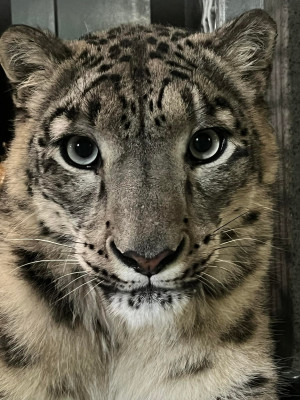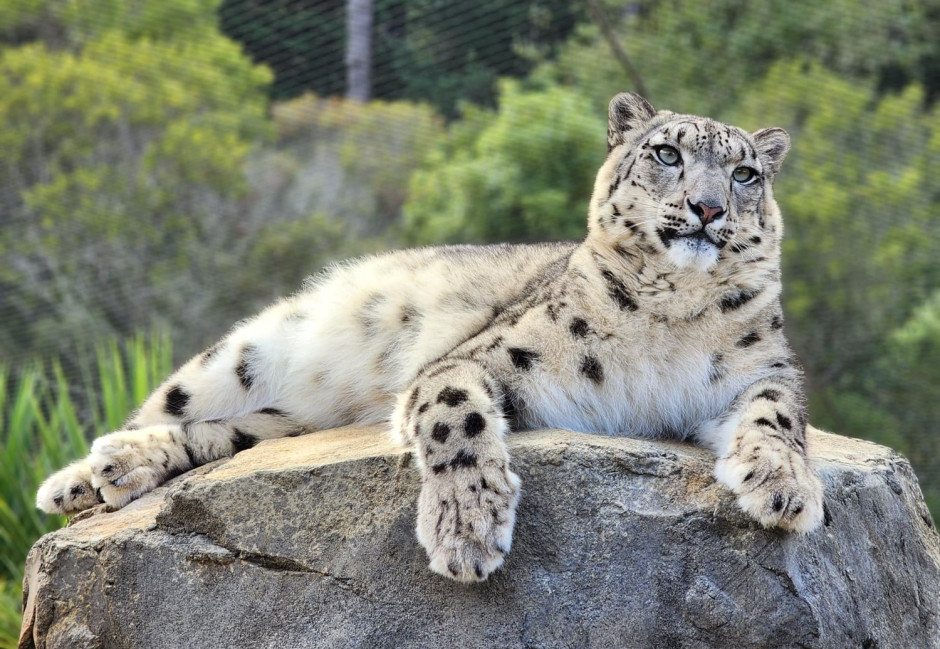Focus on Procurement interview – Chris Jerram
This month we were privileged to interview Chris Jerram, Director Safety, Assets and Sustainability at Wellington Zoo.

Manju, one of the snow leopard sisters at Te Nukuao Wellington Zoo. Photo: Te Nukuao Wellington Zoo.
Where are you from?
I was fortunate to grow up in Nelson and spent a lot of time in Golden Bay as well.
What did you train in and where did you study?
I studied at Canterbury University and completed a BSc in chemistry initially, and followed on with a graduate diploma in mathematics just for fun.
What attracted you to a role in procurement – and what keeps you here?
My first procurement role was in the UK, where I was seconded by a consultancy firm into a London Borough Council. I was responsible for building the contract frameworks and tendering process for the 2 main roading and footpath maintenance contracts. As it wasn’t something I had initially trained for, it was an immense challenge, but one I really enjoyed!
When I returned to New Zealand, I took a role with a construction contractor as an estimator, tendering for construction contracts back in my hometown. Both of these roles provided me with the fundamental skills I’ve been able to employ as part of my current role at Te Nukuao Wellington Zoo.
What advice would you give anyone considering a career in procurement?
I think having some experience on both sides of the procurement process has been hugely beneficial. It’s allowed me to have a considered approach that provides fairness to both sides. I’ve also been fortunate to be involved in managing the contracts after procurement, rather than managing a procurement process and then handing the contract relationship over to a team delivering the work. I understand in larger organisations that can be a common approach, but from my experience, it can lead to some misunderstandings during contract implementation. I think it’s worth being aware of this when heading into any procurement process.
What are 3 things the public do not know about the role of procurement in their lives?
That generally, there’s way more to it than just who’s got the best price, and that sometimes good procurement takes time. The main thing the public might not know about procurement is it is something they are doing for themselves all the time. Ultimately, we each make value propositions for everything we buy, weighing up quality, speed, and value before deciding to purchase something. This is essentially what procurement specialists do, but at a much larger and more detailed scale.
What was involved in Zoo setting up the snow leopard enclosure in Wellington? What were the challenges and what were the opportunities they created?
Te Nukuao Wellington Zoo is nearing 120 years old, and the identified location for the habitat was one of the oldest remaining habitats in the Zoo. This created challenges due to the unknown ground conditions on site, but the site itself was perfect in terms of the topography and providing a dynamic sloping environment for the snow leopards.
The other challenge was having an ongoing construction site in the middle of the zoo, especially as we stayed open the entire time that the habitat was being built.
Working with the contractor on delivery arrangements and safety protocols as part of the procurement process was key to managing any potential conflicts here.
Can you talk about the planning process for procurement for the enclosure? When did this part of the project start? Did everything go to plan?
This project was a long-time coming for the zoo. Funding was allocated in the Wellington City Council (WCC) Long-term Plan after the original business case as early as 2014 and discussed with WCC as early as 2011.
The first procurement process for the project started in early 2020 – with an RFP for a design consultancy team to develop the design and supervise construction. We followed up with two further RFP processes for the visitor engagement design work and the early contractor involvement and construction contracts.
From a construction perspective, the project was delayed a few months due to extremely wet weather and undesirable ground conditions over the winter of 2022. This led to some design changes through the project. Ultimately, the project was a huge success for the Zoo when we opened the habitat to visitors in April 2023. It supported our busiest year in 2023/24, with almost 280,000 visitors coming to see the Snow Leopard sisters.
What was the process like to procure 2 snow leopards?
The snow leopard sisters at Te Nukuao Wellington Zoo came from Melbourne Zoo. Snow leopards that live in human care in Zoos are managed as a population globally. A species coordinator knows the genetics of each individual, manages the population and provides recommendations on where individuals go internationally.
Zoos do not purchase animals, but we do pay the costs of any animal acquisitions such as flights, staff costs, and airport transfers. A percentage of all animal acquisition costs are also donated to our conservation partner TRAFFIC, an organisation that works to tackle the illegal wildlife trade.
We also have to meet specific permit requirements from the Ministry for Primary Industries, the Environmental Protection Agency, and the Department of Conservation for importing animals from other countries. We coordinate with the sending Zoo to ensure we are meeting the animals’ welfare and husbandry needs before and during transport.
What did you learn from this project?
From a procurement perspective, the zoo team, consultants, and construction contractors probably didn’t get the value or benefits we would have all expected with the early contractor involvement element of the process, which is something we learnt in hindsight. If I were to do a similar process again in the future, I would think about engaging the contractors at the earlier stage, and more robustly include early contractor involvement and/or design and build contract terms for the project.
Can you detail your top 3 achievements from your time in procurement?
The snow leopard project is definitely a highlight of my career to date. I also enjoyed elements of my time building tenders for the construction contractor. With my final tender for them, I helped the team win a project with non-price attributes, while being the more expensive contractor. I would say my first procurement project with the London Borough was also extremely satisfying in both the process and outcome.
What is the most exciting thing happening in procurement right now?
Linked to what I’m doing now, I think some of the changes to NZS3910 will be interesting to see how they work in future. From what I’ve heard within the industry, the drive for more design-build contracts will also be interesting to see play out in future large-scale construction projects.
In an ideal world where you were not confined by a budget, what would you introduce to procurement that could help the industry function and develop?
For someone to develop legally-vetted AI to draw up contract documents. Getting stuck in legal weeds between contractors and clients has always been a frustrating last step when you just want to get started!
